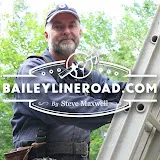BBQ Stand Overview
Jan 25, 2024
BBQ Stand Overview
View Video Transcript
0:00
This outdoor grill stand is easier to make than it looks and surprisingly
0:05
useful if you want to use your backyard or lakeside cottage property for some
0:10
outdoor cooking. The legs and the framework can stay outside but the
0:19
grills themselves, so this larger one here and then the warming grill up top
0:23
can be brought inside for cleaning and storage so it just stays in better
0:28
condition, doesn't rust and as I said it's quite easy to build so let's
0:33
take a look at some of the details on the plans. Your construction work will go
0:39
better if you print out the plans and keep them handy in your shop for
0:42
reference and looking at them now you can see that the majority of the support
0:48
structure is made by one and a half inch by one and a half inch by 3 16th angle
0:54
iron. That 3 16th business refers to the thickness of the two sides that come
1:00
together so it's it's fairly thick angle iron. The front legs half inch square
1:05
solid rod that's the same thing that's used for the grill end components, the
1:12
components that hold together the quarter inch diameter solid steel rods that form the actual grill surface. Up here we've got the same material used to
1:26
make the handles for lifting the warming rack off. Quarter inch is small enough
1:32
that you can bend that around something without heating it necessarily. It's not
1:37
a big deal to bend that kind of steel before you weld it on to these upper
1:42
grill ends. When it comes to these side pieces here, here and here, as well as the
1:50
back pieces there's something I need to mention. The front is no problem it's
1:55
just a square cut front flush with the front legs but because the back piece
2:02
here that you can see meets the side pieces here you are going to need to cut
2:09
this at a 45 degree angle so so they can come together properly. Without that
2:15
the bottom flange of one piece of angle iron is going to interfere with another
2:20
but it's easy enough to make a 45 degree cut here. It doesn't have to be super
2:24
accurate. I mean the more accurate the better of course but it's it's not a
2:29
hugely crucial thing it's just more or less about creating clearance so the
2:34
parts can come together properly within this back leg. I'd like to leave you with
2:40
one other thing one other tip in this video and it has to do with efficiently
2:46
creating this grill with nice even spaces between. You can spend a lot of
2:53
time measuring and marking for the different grill bars and you're going to
3:00
spend a lot of time on that and it probably still won't work out all that accurately because a little bit of error is going to look kind of bad. It's going to
3:08
show up quite a bit visually so what I recommend is that you start by welding
3:13
the back bar on and you make that square square to the the grill ends here but
3:22
then you find some kind of a piece of metal that's the right width for the
3:29
spacing that you want between the grill bars so that could it's not crucial it
3:35
can be half an inch five-eighths of an inch you know even three-quarters if you
3:40
want but if you got a strip of steel it doesn't really matter what it is as long
3:47
as it's long enough to rest up against that first bar that you've welded down
3:51
it so it acts as a kind of a spacer you have you have your spacer piece tight to
3:57
the first bar and then you put your second bar in tight to the spacer and
4:01
then you tack weld it here and here and then you you hopscotch your spacer over
4:07
to the next one and then you put in the third grill bar and you just keep going
4:13
like that so that'll be much faster than measuring and as long as you're working
4:18
carefully you will have perfectly parallel grill bars that are going to
4:23
look great
#Barbecues & Grills
#BBQ & Grilling
#Construction & Power Tools
#Home Improvement
#Patio
# Lawn & Garden


